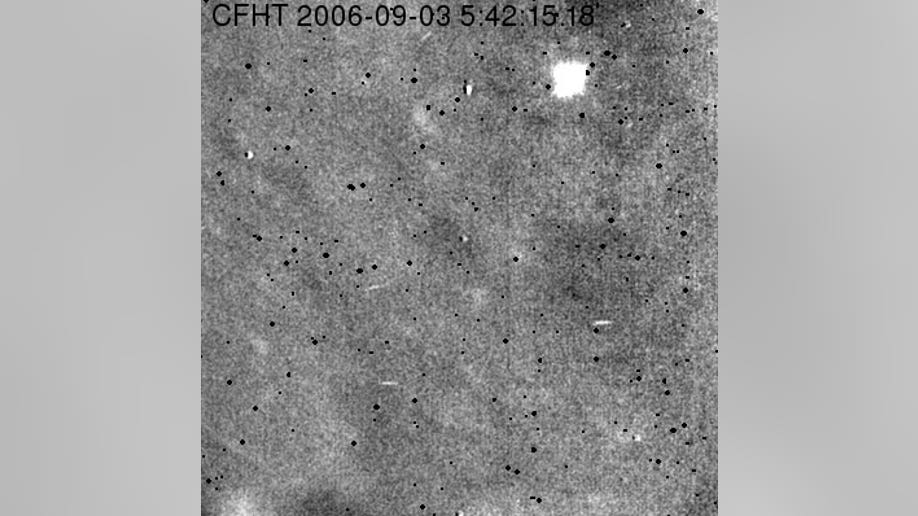Top 10 Moon Crashes
{{#rendered}} {{/rendered}}
NASA's Lunar Crater and Observation Sensing Satellite mission sent two impactor spacecraft smashing into the moon. Scientists hope the impacts produce evidence of hydrogen locked away in the moon's North Pole, possibly in the form of water ice. <b>(Space.com)</b> (NASA)

The European lunar orbiter impacted the moon at a shallow angle on September 3, 2006. The space probe squeezed some extra science from its mission's conclusion by going out with a bang for astronomers watching from Earth. <b>(Space.com)</b> (CFHT/ ESA SMART-1 (C.Veillet/B. Foing) )
NASA's Meteoroid Environment Office has seen many meteorites strike the moon since 2005, including Geminids, Leonids, and a Taurid from various clouds of space debris. Even pebble-sized meteorites can blast craters several feet wide when traveling at 78,000 mph. <b>(Space.com)</b> (NASA Meteoroid Environment Group)
Astronomers recorded a tiny blip caused by the flash of a meteoroid hit northwest of Mare Imbrium on Nov. 7, 2005. The rock that impacted in the moon's "Sea of Showers" was estimated at just 4-5 inches in diameter, leaving a crater 10 feet wide and 1.3 feet deep. <b>(Space.com)</b> ( NASA/Marshall Space Flight Center)
NASA's Lunar Prospector spacecraft detected large amounts of hydrogen at the moon's poles before diving into a crater on July 31, 1999. The spacecraft vanished without a trace and left Earth observers with nothing to see. <b>(Space.com)</b> (NASA/LPI)
Back when NASA was landing men on the moon, it was also crashing empty stages of the Apollo lunar modules and Saturn rockets into the lunar surface. Apollo moonwalkers installed seismometers to record the tremors and jolts from both man-made and natural impacts. <b>(Space.com)</b> (Neil Armstrong/Apollo 11 Crew/GRIN/NASA)
An amateur astronomer named Leon H. Stuart photographed a flash on the moon in the early 1950s — the only unambiguous record of an asteroid-sized body impacting the lunar surface. NASA's Clementine spacecraft later spotted the likely crater while orbiting the moon in 1994. <b>(Space.com)</b> (Buratti/Johnson)
The Shoemaker Crater resulted from an old lunar impact, but has become a site of interest for NASA's moon-slamming missions. Shoemaker lies in the permanent shadow of the moon and has high concentrations of hydrogen that may take the form of water ice. Lunar Prospector aimed for this crater in 1999, and NASA will send another spacecraft diving into Shoemaker in February 2009. <b>(Space.com)</b>
The famous "Man in the Moon" may have been created by asteroid impacts on the other side of the moon. Some shock waves from early asteroid impacts traveled through the moon's interior and may have set off volcanic eruptions on the far side. When the lava flows cooled, they left dark blotches on the lunar surface for Earth observers to interpret as a face. <b>(Space.com)</b> (NASA)
Dwarfing all other lunar impacts is the event that created the moon — an object the size of Mars that crashed into Earth some 4.6 billion years ago. Heated debris from that impact formed a huge cloud, part of which eventually cooled and coalesced to form the lunar neighbor to Earth. <b>(Space.com)</b> (ESA/Medialab)
